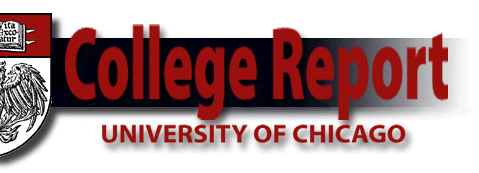 |

A second
shot at the biker pics of Daniel Lyon, AB’63
Daniel J. Lyon,
AB’63, still has his first photograph. The subject: a turtle. Taken
at summer camp when he was 12, the image grew out of a desire to
document the places he loved. That same desire led to his first
book, The Bikeriders, recently re-released by Twin Palms Publishers.
“Even at 12, I was functioning as a documentarian,” he says.
In The Bikeriders,
Lyon documents the lives and pastimes of a group of blue-collar
workers in Chicago. With the book, he strove to capture a reality
he found more dramatic and truthful than the images of middle-class
life he saw filling the pages of mainstream magazines at the time.
Known for his devotion to his projects, Lyon, still a documentary
filmmaker and photographer, spent four years on the book—from 1962
to 1966—and got to know his subjects personally, even joining a
motorcycle club and conducting interviews in his Hyde Park apartment.
The images and stories he chronicled have become legendary: When
first published in 1968, the book cost $6; today, originals go for
up to $600.
As a College
student, Lyon remembers riding his own Triumph motorcycle around
the main quad’s circle drive with other student enthusiasts. “This
wasn’t the Hell’s Angels,” he says of the group. “It was the philosophy
department.” During this time, Lyon also attended area motorcycle
races, where he took his first photographs of riders. Though he
includes some of these early images in the book, The Bikeriders
primarily focuses on the members of the Chicago Outlaws, a motorcycle
club formed in the early 1950s. When Lyon joined the club to get
closer to his subjects, some of his peers—even the legendary gonzo
journalist Hunter S. Thompson—thought he was going too far. Lyon
responded that he liked the club members because they were different
from Hyde Park residents and U of C students. “They’re people; I’m
people,” he would say.
The Bikeriders’
black-and-white photos of the club’s members are accompanied by
bits of their life stories as told to Lyon. They talked about time
in the Army, public perceptions of motorcycles and bikeriders, and
motorcycle chases with the police. “Cockroach,” an ex-club member,
describes idolizing the motorcycle riders he saw as a teenager and
wanting to be like them. He went as far as putting filth on his
clothes and hair—and eating bugs. “A good grasshopper won’t hurt
you,” Cockroach says in the book. “It’s nothing but meat. It’s a
delicacy, as a matter of fact. Myself, I prefer to eat ’em alive.”
The book also contains members’ musings on the public perception
of bikeriders. A motorcycle racer, Johnny, tells how two almost
identical accidents—one involving a motorcycle and the other a car—were
presented differently in the local paper, with the bikerider cast
as a juvenile delinquent and a danger to the highways, while the
driver of the car, although drunk, was not similarly condemned.
With the book’s
re-release, Lyon hopes a new generation of readers can meet these
characters without having to spend hundreds of dollars. For him,
the urge to document remains.—Q.J.
|

